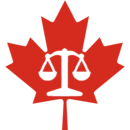Our website is made possible by displaying online advertisements to our visitors.
Please consider supporting us by disabling your ad blocker.
Canadian Indigenous law
| Part of a series on |
| Canadian law |
|---|
 |
Indigenous law in Canada refers to the legal traditions, customs, and practices of Indigenous peoples and groups.[1] Canadian aboriginal law is different from Indigenous Law. Canadian Aboriginal law provides certain constitutionally recognized rights to land and traditional practices.[2]
Canada contains over 900 different Indigenous groups, each using different Indigenous legal traditions. Cree, Blackfoot, Mi'kmaq and numerous other First Nations; Inuit; and Métis will apply their own legal traditions in daily life, creating contracts, working with governmental and corporate entities, ecological management and criminal proceedings and family law. Most maintain their laws through traditional governance alongside the elected officials and federal laws. The legal precedents set millennia ago are known through stories and derived from the actions and past responses as well as through continuous interpretation by elders and law-keepers—the same process by which nearly all legal traditions, from common laws and civil codes, are formed.[3]
While the many legal traditions appear similar in that none were codified, each has quite different sets of laws. Many laws stem from stories which in turn may stem from writings or markings, such as geographic features,[4] petroglyphs, pictographs, wiigwaasabakoon and more. Inuit Nunangat's governance[5] differs quite markedly from its many-nationed neighbour Denendeh, as Denendeh's diverse Dene Laws differ quite markedly from laws governing Lingít Aaní,[6][7] Gitx̱san Lax̱yip[8] or Wet'suwet'en Yin'tah;[9] and, as those differ from Haudenosaunee's,[10] Eeyou-Istchee's or Mi'kma'ki's. One thing most Indigenous legal and governance traditions have in common is their use of clans such as Anishinaabek's doodeman (though most are matrilineal like Gitx̱san's Wilps).[11]
- ^ John Borrows (2006). "Indigenous Legal Traditions in Canada" (PDF). Report for the Law Commission of Canada. Law Foundation Chair in Aboriginal Justice and Governance Faculty of Law, University of Victoria.
In Canada, Indigenous legal traditions are separate from but interact with common law and civil law to produce a variety of rights and obligations for Indigenous people....Many Indigenous societies in Canada possess legal traditions. These traditions have indeterminate status in the eyes of many Canadian institutions.
- ^ Kaufman, Amy. "Research Guides: Aboriginal Law & Indigenous Laws: A note on terms". guides.library.queensu.ca.
Indigenous law exists as a source of law apart from the common and civil legal traditions in Canada. Importantly, Indigenous laws also exist apart from Aboriginal law, though these sources of law are interconnected. Aboriginal law is a body of law, made by the courts and legislatures, that largely deals with the unique constitutional rights of Aboriginal peoples and the relationship between Aboriginal peoples and the Crown. Aboriginal law is largely found in colonial instruments (such as the Royal Proclamation of 1763, the Constitution Acts of 1867 and 1982 and the Indian Act) and court decisions, but also includes sources of Indigenous law. "Indigenous law consists of legal orders which are rooted in Indigenous societies themselves. It arises from communities and First Nation groups across the country, such as Nuu Chah Nulth, Haida, Coast Salish, Tsimshian, Heiltsuk, and may include relationships to the land, the spirit world, creation stories, customs, processes of deliberation and persuasion, codes of conduct, rules, teachings and axioms for living and governing.
- ^ John Borrows (12 May 2016). Freedom and Indigenous Constitutionalism. University of Toronto Press. pp. 3–. ISBN 978-1-4426-3095-6.
- ^ Ignace, Marianne; Ignace, Ronald E (October 2017). Secwépemc People, Land, and Laws – Yerí7 re stsq̓ey̓s-kucw. Secwepemcúl̓ecw, Canada: McGill-Queen's University Press. p. 624. ISBN 9780773551305.
- ^ "Who We Are". Inuit Tapiriit Kanatami ᐃᓄᐃᑦ ᑕᐱᕇᑦ ᑲᓇᑕᒥ. Retrieved 24 December 2018.
- ^ "Tlingit Law, American Justice and the Destruction of Tlingit Villages". Vimeo. Sealaska Heritage InstituteP. 20 November 2012. Retrieved 24 December 2018.
- ^ Williams, Jackie. "Lingit kusteeyì: What my Grandfather taught me". Taku River Tlingit Place Names. Taku River Tlingit First Nation. Retrieved 24 December 2018.
A Tlingit history as recounted by Jackie Williams, Wolf Clan Leader, Taku River Tlingit First Nation
- ^ "Our Way: The Traditional System Today". Gitxsan. Gitx̱san Nation. Retrieved 24 December 2018.
- ^ "Wet'suwet'en People". Unist'ot'en Camp. Unist'ot'en. Retrieved 24 December 2018.
- ^ "Haudenosaunee Confederacy". Haudenosaunee Confederacy. Haudenosaunee. Retrieved 24 December 2018.
- ^ "Our Way: The Wilp". Gitxsan. Gitx̱san Nation. Retrieved 24 December 2018.
Previous Page Next Page


